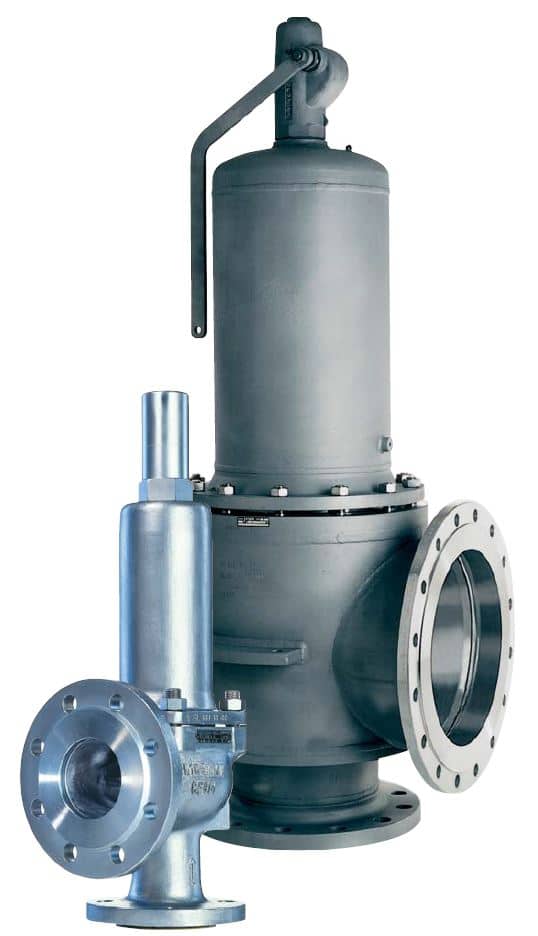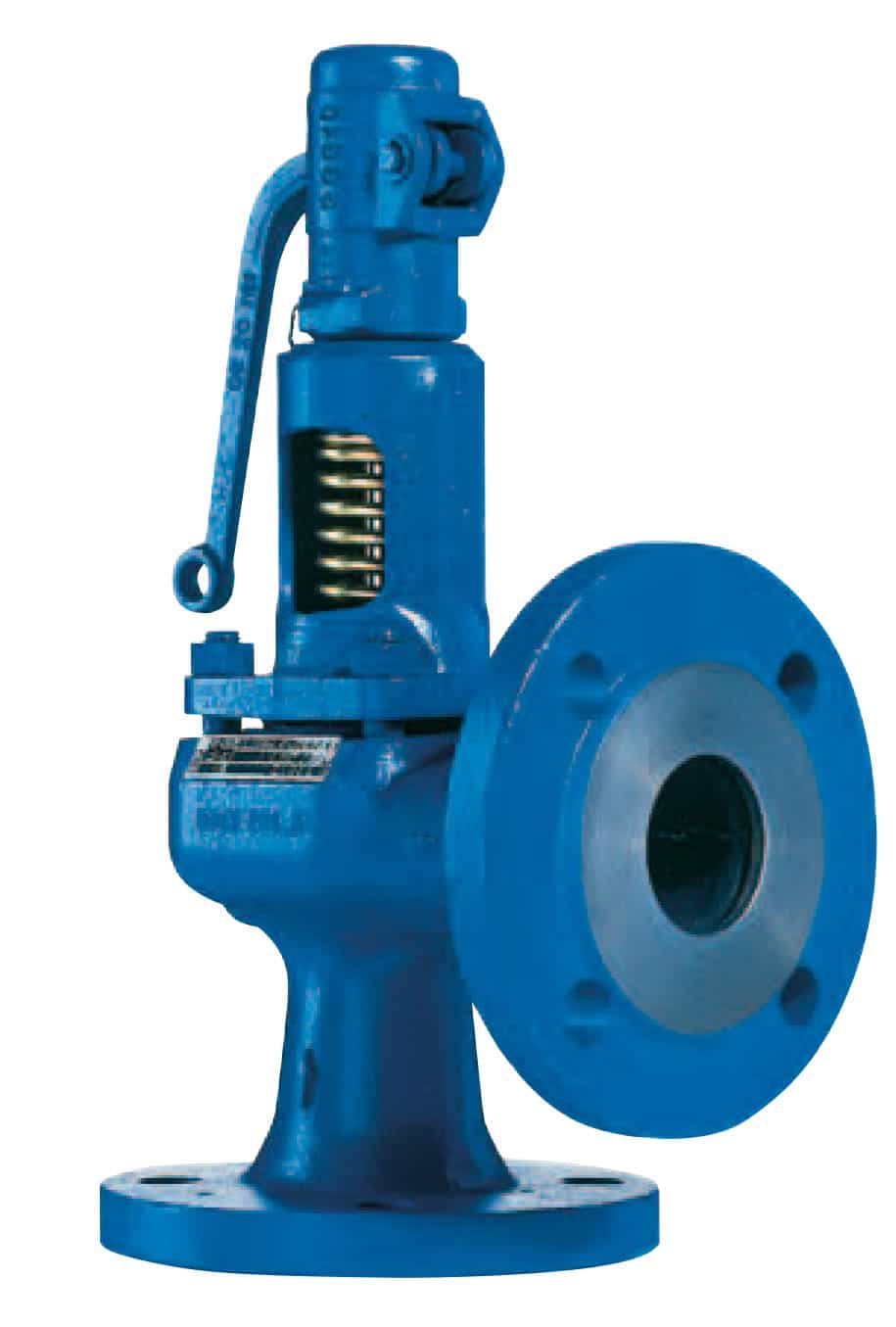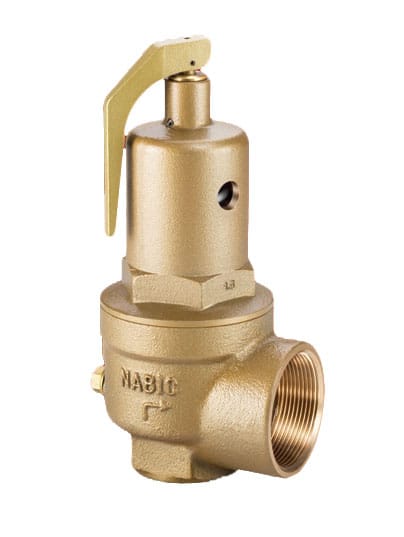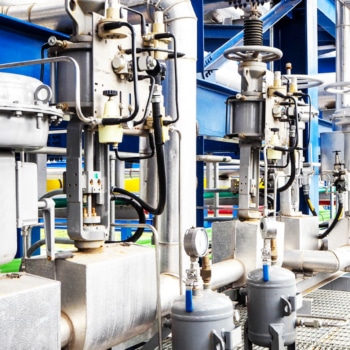Safety Valves
A Safety Valve is a device that is fitted to a pressurised system in order to release pressure should it exceed the safe limit. In industrial and manufacturing settings, these valves are critical for protecting both equipment and personnel. There are many different types of safety valves available on the market, each with its own specific set of features and benefits. We will discuss the various types of safety valves available and provide some tips on how to choose the right one for your needs.
Speak with our experts
Fill out our quick and easy contact form with your enquiry and we'll get back to you.
Safety Valves Benefits
Safety valves are an important part of any closed system. They provide protection against overpressure, which can damage equipment or cause injuries to personnel. Additionally, safety valves can help to maintain the quality of a product by preventing sudden changes in pressure. When choosing a safety valve, it is important to consider the set point, reset pressure, flow capacity, and temperature and pressure rating. WRAS-approved safety valves are also available for use in potable water applications.
Valveforce are specialist in the design, specification and supply of high-quality industrial valves & actuators. If you're looking for more information on Safety Valves or any of our other products or services, please don't hesitate to get in touch.
Safety Valves Explained
What are Safety Valves?
A Safety Valve opens from a set pressure to relieve overpressures in a closed system. It is the last line of defence against excessive pressure and must be able to open quickly and reliably when needed. Safety Valves are usually spring-loaded so that they can open automatically when the preset pressure is reached.
Safety valves only have mechanical parts that are in contact with the process fluid. This means that there is no chance of contamination of the product by the valve itself.
How Does a Safety Valve Work?
A Safety Valve is a device that is installed in a closed system to relieve overpressures. It is the last line of defence against excessive pressure and, therefore must be able to open quickly and reliably when needed. Safety Valves are usually spring-loaded so that they can open automatically when the preset pressure is reached.
When the system pressure reaches the set point of the Safety Valve, the valve will open and allow excess pressure to be relieved from the system. Once the pressure has been relieved, the safety valve will close again. This prevents the system from depressurising too quickly, which could cause damage to equipment or personnel.
Types of Safety Valve
Relief Valves
Relief Valves are the most common type of Safety Valve. They are used to protect equipment from overpressures by relieving excess pressure from the system. Relief valves can be either direct-acting or pilot-operated.
Safety Relief Valves
Safety Relief Valves are similar to relief valves but with an additional feature that allows them to close automatically when the overpressure has been relieved. This prevents the system from depressurising too quickly, which could cause damage to equipment or personnel.
Pop Safety Valves
Pop Safety Valves are a type of Relief Valve that is opened by a sudden increase in pressure. They are often used in applications where it is not possible to install a traditional Relief Valve.
Bursting Discs
Bursting Discs are a type of Safety Valve that is designed to rupture at a predetermined pressure. They are often used in applications where it is not possible or practical to install a traditional relief valve.
High-Performance Full Lift Safety Valves
High-Performance Full lift Safety Valves are designed for use in high-pressure applications. They are able to provide reliable protection against overpressure while also ensuring that the system does not depressurise too quickly.
Modulating Action Safety Valves
Modulating Action Safety Valves are designed for use in applications where it is important to maintain constant product quality. They can modulate the relief of pressure in order to prevent sudden changes in product quality.
Pilot-Operated Safety Valves
Pilot-Operated Safety Valves are often used in applications where it is not possible to install a traditional Relief Valve. They can provide reliable protection against overpressure while also ensuring that the system does not depressurise too quickly.
WRAS Approved Safety Valves
WRAS, which stands for Water Regulations Advisory Scheme, is a UK-based certification that shows that a product meets the necessary standards for use in potable water applications. WRAS-approved safety valves are designed for use in applications where it is important to maintain the quality of the water supply.
Choosing the Right Safety Valve
Set Pressure: The set pressure is the pressure at which the Safety Valve will open and relieve pressure from the system. It is important to choose a set point that is high enough to protect equipment from overpressure but not so high that it causes frequent false trips.
Flow Capacity: The flow capacity of a safety valve is the maximum amount of fluid that can be discharged through the valve in a given period of time. It is important to choose a valve with sufficient flow capacity for the application.
Reset Pressure: The reset pressure is the pressure at which the Safety Valve will close after it has opened. It is important to choose a reset point that is high enough to protect equipment from overpressure, but not so high that it causes frequent false trips.
Temperature and Pressure Rating: The temperature and pressure rating of a Safety Valve is the maximum temperature and pressure that the valve can safely handle. It is important to choose a valve with a rating that exceeds the maximum operating conditions of the system.
Valveforce Safety Relief Valves
High Performance Safety Relief Valves
The High Performance product group represents
- High capacity related to the safety valve size
- High adaptability
- Excellent price / performance ratio
LESERs High Performance Safety Valves
- Are designed to meet all industrial applications.
- Open rapidly with an overpressure of 5 % to the full design
lift. - Are used particularly for vapours and gases where
the maximum mass flow has to be discharged rapidly. - Have a maximum blowdown of minus 10 % for steam/
gas service and minus 20 % for liquid service. - Are one of the best selling spring loaded safety valve
worldwide. - Are developed in a close cooperation with plant engineers and service specialists.
- Serve for protection of processes and equipment.
- Are developed in a close cooperation with plant engineers and service specialists.
- Are approved by all important approval organisations worldwide which ensures the worldwide applicability
Furthermore, all LESER High Performance safety valves are designed, marked, produced and approved acc. to the requirements of the following regulations (directives, codes, rules and standards).
EN ISO 4126-7, EN 12266-1/-2, EN 1092 Teil I and II flanging,
ASME PTC 25, ASME-Code Sec. II, ASME B16.34 and ASME
B16.5-flanging, API Std. 527, API RP 576,
AD 2000-Merkblatt A4, AD 2000-Merkblatt HP0.

Technical Data Sheet
Modulate Action Safety Relief Valves
The Modulate Action product group stands for
- Suitable solutions for all areas of applications,
especially thermal expansion - Lowest possible loss of medium
- Compact construction and low weight
LESER Modulate Action Safety Valves
- are characterised by longstanding proof in service and are constantly optimised by service specialists.
- are available as standard safety valves.
- reach their full lift within a pressure increase of 10% above the set pressure
- are suitable for almost all industrial applications.
- are accepted by numerous rules and regulations and approved by leading classification societies.
Furthermore, all LESER Modulate Action safety valves are designed, marked, produced and approved according
to the requirements of the following regulations (directives, codes, rules and standards):
EN ISO 4126-7, EN 12266-1/-2,
EN 1092 Part I and II Flange, ASME B 16.34 and ASME
B16.5- Flange, AD 2000-Merkblatt A4, AD 2000-Merkblatt HP0.

Technical Data Sheet
WRAS Approved Safety Valves
The NABIC 500 is designed primarily for use on unvented hot water heating systems, where a high capacity, emergency steam relief capability is required.
All wetted parts are manufactured from dezincification resistance materials. Designed and tested to BS EN ISO 4126 -1. WRAS approved (1 bar and above).
- Size Range: DN15 - DN65
- Resilient PTFE seating design with high
degree of seat tightness - Easy inspection and cleaning
- High discharge capacity
- Diaphragm protected parts
- Available with Viton seat design
- Padlock available (complies with M&E3)
- Pressure setting locked and sealed
- Drain plug fitted on DN32 and above



